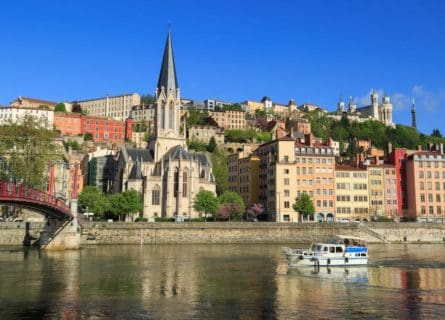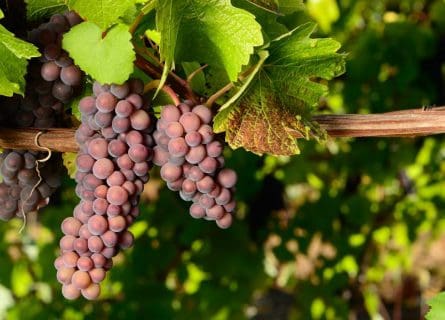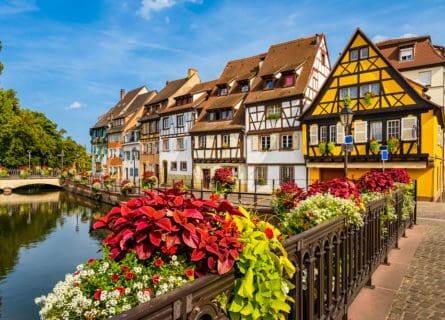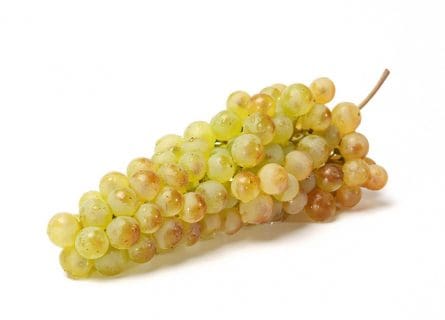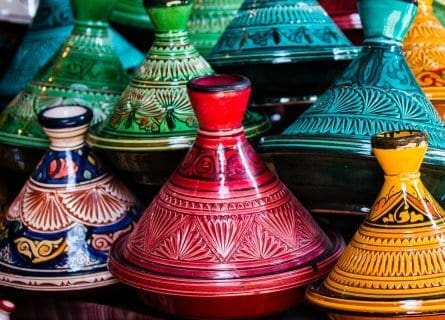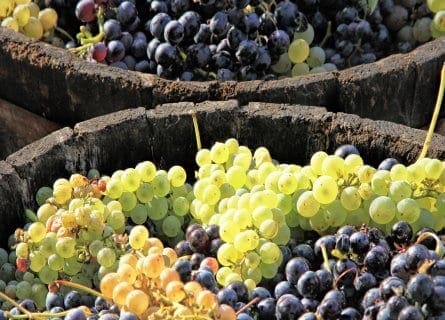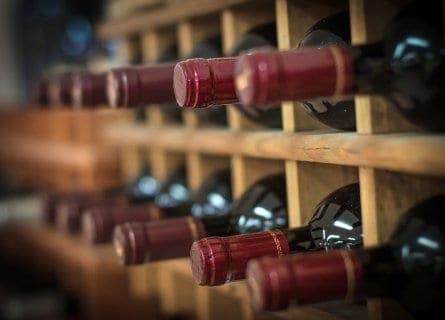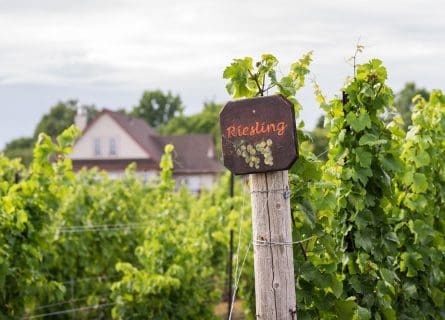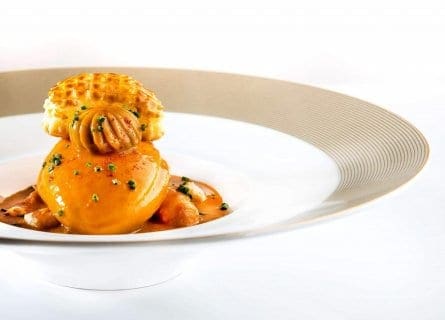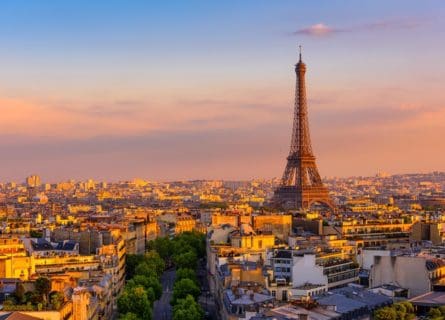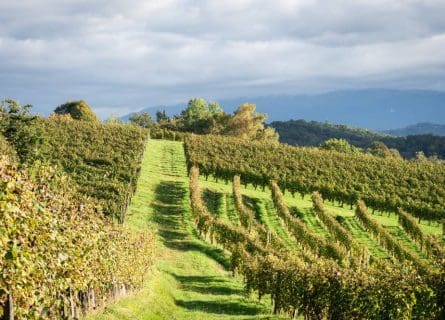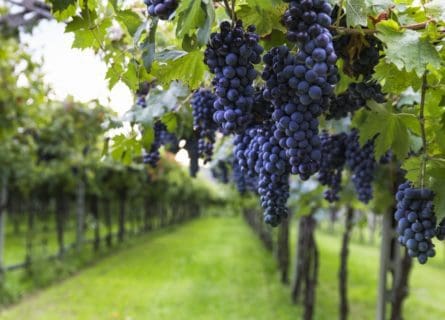Bergerac Travel Guide
Bergerac Bound: Vineyards, Vistas, and the Vintage Soul of Dordogne
There can be few wine lovers who haven’t at least heard of Bergerac. Rich vineyards and fields surround this beautiful town, capital of the Perigord Pourpre, one of the largest wine-growing regions of the Aquitaine. The town’s main claim to fame is the dramatist and satirist Savinien Cyrano de Bergerac (1619-55), whose romantic exploits have inspired many dramatizations.
Bergerac’s official history does not begin until the 11th century, although Cro-Magnon man was here long before the Romans arrived in Gaul. Today, the Vezere Valley in the Dordogne has the most spectacular series of prehistoric cave paintings anywhere in Europe, including the astonishing Grotte de Lascaux near Montignac.
However, early man and Gallic tribes were supplanted and suppressed by the Romans following their conquest of Gaul. Roman rule endured for centuries, bringing many significant technological and civic advancements. It was only in 476 that their hold over France finally gave way as the Western Roman Empire fell apart. In their place rose two great dynasties – the Frankish Merovingian and Carolingian families. Their control over France was fierce and pragmatic, adopting many aspects of the more enlightened and pervasive Gallo-Roman culture into their own. By this point, Christianity had spread across the entire country.
In the 12th century, the Perigord region’s political situation shifted dramatically following Henry of Anjou’s marriage with Eleanor of Aquitaine. Over a third of France, including the Dordogne and its towns, became the property of the English crown. Bergerac was founded sometime in the 11th century as a fortified outpost, which is no longer in existence. At the time, Bergerac had the only bridge across the Dordogne River, making it a vitally important piece of strategic real estate. Indeed, the wider region has become known as the ‘Land of 1001 Chateaux’ thanks to its abundance of historic castles. They were built primarily to protect citizens and repel opposing armies.
Bergerac flourished through the Middle Ages, as its wines gained a favorable reputation throughout Europe and became vital to the town’s prosperity. Yet the wider region saw many battles during the Hundred Year’s War, and it changed hands between the English and French forces before the end of the conflict in 1453. Earlier that century, Charles VII had marched triumphantly into Paris to claim sovereignty over France.
In the 16th century, France was engulfed in the Wars of Religion between the Huguenots (French Protestants), the Catholic League (led by the House of Guise), and the Catholic Monarchy. Sadly, the Wars of Religion would bring misery to the citizens of Bergerac. Continuous persecution of the town’s large protestant population saw the overall population decline from the end of the 17th century.
The 18th century was also a very turbulent time for the citizens of France. Louis XV was an ineffectual leader whose regime was increasingly at odds with the country’s needs. Enlightened anti-establishment and anticlerical ideas expressed by Voltaire, Rousseau, and Montesquieu further threatened the royals. Tensions were further escalated by the Severn Years War fought by France and Austria against Britain and Prussia, leading to the loss of France’s flourishing colonies in Canada, the West Indies, and India to the British. The war cost a fortune and was even more ruinous for the monarchy; it helped to disseminate in France the radical democratic ideas that had been thrust onto the world stage by the American Revolution.
All of which led to the French Revolution, the declaration of the First Republic in 1792, and the execution of Louis XVI and his vilified queen Marie-Antoinette. The next hundred years saw an incredible amount of social and political change, including the rise to power of Napoleon Bonaparte, his subsequent banishment and the installation of a failed second Republic, and the eventual rise of Emperor Napoleon III of the Second Empire in 1851. However, so too would his reign be marked by ruinous wars and social tension – finally, France declared its Third Republic in 1870.
In the 20th century, Bergerac reclaimed its former status as an important urban center in the Perigord by creating and expanding its tobacco and wine industries. Bergerac wine was highly regarded by the mid-20th century, which was sadly overshadowed by the outbreak of the Two World Wars.
Today, Bergerac is a quintessential historic French town merging the ancient with the modern with effortless ease. Its cobbled old town, medieval harbor, beautiful countryside, and excellent restaurants attract a sizeable number of summer tourists, as the broader region. Yet despite its global renown, Bergerac has managed to hold onto its authentic character and never feels like a touristy caricature. It is a living, breathing, working town with many attractions.
-
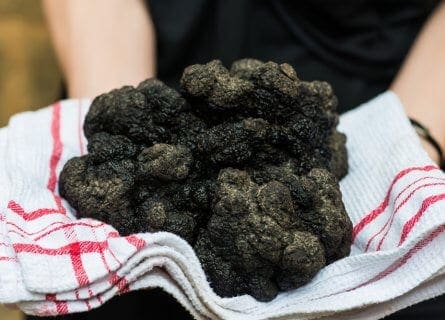
Black truffles of Perigord Gastronomy & Wine
Residents of Bergerac are understandably very proud of their gastronomic heritage. Boastful even. But then again, who could resist taking pride in such a varied, rich, and hearty gastronomic tradition as that of the Perigord region. You’re in the land of foie gras, of duck ‘steaks’ (magrets), of preserved goose and duck – the birds, fattened on corn, are free to roam during the day in the gorgeous Dordogne landscape, ensuring an unparalleled depth of flavor and quality.
Is your mouth watering yet? It should be; this is a region dedicated to the more beautiful things in life, namely fresh, seasonal ingredients put to spectacular use and wine that is often sourced a mile away from the restaurant you’re seated in or closer! An abundance of local produce and enthusiastic chefs means that visitors are spoiled for choice. Generally, chefs prefer classic recipes and time-honored culinary traditions – Bergerac is not the destination in France to go searching for avant-garde, molecular cuisine.
But then, who needs the cutting edge, when you have many forms of pate foie gras, rich confit de canard, and black truffles that grow in the autumn midsts of the stunning Perigord countryside. Locals often attribute aphrodisiacal qualities to the black truffles of Perigord, and it must be said that its perfume is one of the most intoxicating imaginable. It enhances countless dishes in the form of truffle juice or thin savings – pasta with black truffle is not to be missed. But even a simple salad can be memorable if there is just a small hint of black truffle in its recipe.
Bergerac is no less proud of its venerable wine tradition. Thanks to a combination of lower yields and a mastery of oak aging, the wines from this corner of France are now giving the best of Bordeaux a run for their money. Today, Bergerac is full of deep-flavored, well-structured red wines and aromatic, elegant whites. The grapes are the same as Bordeaux’s – Cabernet/Merlot blends for the reds and Sauvignon Blanc/Semillon blends for the whites. The climate is a little more extreme than that of the Atlantic-influenced Gironde, and there is limestone on higher ground. A varied terroir gives rise to a wide variety of wine styles – the best of which are great accompaniments to local Périgord Cuisine.
A Gastronomic Guide to the Cuisine of Périgord Cuisine: Read more
Highlights
-
Place de la Mirpe
With its tree-shaded square and timber houses, place de la Mirpe is undoubtedly the prettiest part of Bergerac’s delightful old town. Perfect for a leisurely stroll – and a glass of wine! – the La Place Pelissiere is also worth a visit, boasting a jaunty statue of Cyrano de Bergerac looking up at the nearby church.
-
Musee du Vin/Musee du Tabac
Bergerac’s museums are dedicated to its twin vices: wine and tobacco. The fascinating Musee du Vin et de la Batellerie has displays of vintage wine-making equipment, while the Musee du Tabac collects lots of ornate pipes and tobacco-centered artifacts inside the 17th century Maison Peyrarede.
-
Chateau Biron
This much-filmed chateau is a glorious mishmash of quirky style and opulence. It deserves a full day’s exploration.
Recommended for you
More information
If you would like us to customize an exclusive luxury tour, contact us and let us know your travel plans. We offer luxury food and wine tours for private groups of a mininium two guests. In addition, all of our private, chauffeured tours are available year-round upon request.

Cellar Tours
Welcome to Cellar Tours, the premier Luxury Travel Specialist since 2003. Our goal is to provide you with the ultimate food and wine vacation experience, with exclusive Mercedes chauffeured tours that showcase the best of local cuisine and wines.
Our team specializes in crafting bespoke, custom-designed vacations, events, and incentives tailored to your unique tastes and preferences. Travel is not just about seeing new places - it's about creating unforgettable memories and indulging in the finer things in life.
As members of Slow Food, OTAVA (Travel Agency Association in Spain), and the IACP (International Association of Culinary Professionals), we promote sustainable tourism and support local communities. We work closely with top-rated hotels, restaurants, and wineries to provide you with the highest level of service and attention to detail.
Whether you're planning a romantic getaway, a family vacation, or a corporate retreat, let Cellar Tours be your guide. With our passion for food and wine, extensive knowledge of local culture, and dedication to exceptional customer service, we're confident we can exceed your expectations.
Contact us today to start planning your dream vacation – we can't wait to hear from you!

